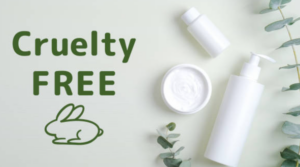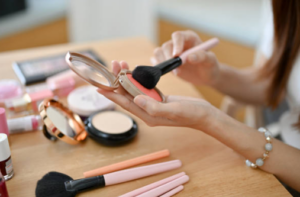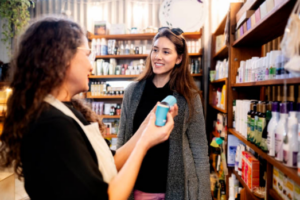When Brands Aren’t Fully Transparent

Cruelty-free beauty has gained significant traction in recent years as consumers become increasingly conscious of the ethical implications of their purchasing decisions. The desire to support brands that refrain from testing their products on animals has led to a surge in demand for cruelty-free cosmetics and skincare. However, navigating the complex landscape of cruelty-free beauty isn’t always straightforward. In this blog post, we’ll explore the gray areas of cruelty-free labeling, shedding light on instances where brands may not be as transparent as they appear and offering guidance for conscientious consumers.
Understanding Cruelty-Free Certification
Cruelty-free certification is typically administered by independent organizations that specialize in animal welfare and ethical consumerism. Some of the most well-known certifying bodies include:
Leaping Bunny: This internationally recognized certification program requires brands to undergo a thorough audit of their supply chain to ensure compliance with cruelty-free standards. Leaping Bunny certification signifies that a brand has committed to no animal testing at any stage of product development.
PETA (People for the Ethical Treatment of Animals): PETA’s Beauty Without Bunnies program certifies brands that have signed pledges confirming their commitment to no animal testing. Brands must also submit documentation verifying their cruelty-free status, including agreements with suppliers and manufacturers.
Choose Cruelty-Free: Based in Australia, Choose Cruelty-Free offers certification to brands that meet its strict criteria for cruelty-free practices. This includes a ban on animal testing for both finished products and individual ingredients, as well as adherence to ethical sourcing principles.
Each certifying organization establishes its own criteria for cruelty-free certification, but there are common elements that typically include:
No animal testing: Brands must demonstrate that their products and ingredients have not been tested on animals at any stage of development, including sourcing, formulation, and final production.
Supplier and manufacturing agreements: Brands must obtain written agreements from suppliers and manufacturers confirming their commitment to cruelty-free practices. This includes ensuring that raw materials and finished products are not subjected to animal testing by third parties.
Regular audits and inspections: Certifying organizations may conduct periodic audits and inspections of brands’ facilities and supply chains to verify compliance with cruelty-free standards. These audits help ensure transparency and accountability within the certification process.
While cruelty-free certification offers valuable reassurance to consumers, it’s essential to recognize its limitations and challenges:
Lack of universal standards: Cruelty-free certification is not regulated by a governing body, leading to variability in standards and criteria across certifying organizations. Some certifications may be more rigorous and comprehensive than others, making it difficult for consumers to discern which certifications are most reliable.
Limited scope of certification: Cruelty-free certification typically focuses on animal testing and does not address other ethical considerations, such as ingredient sourcing, environmental impact, or labor practices. Consumers interested in a holistic approach to ethical beauty may need to consider additional factors beyond cruelty-free certification.
Cost and accessibility: Obtaining cruelty-free certification can be costly and resource-intensive for brands, particularly smaller independent companies. As a result, some brands may choose not to pursue formal certification despite adhering to cruelty-free principles. This lack of certification can make it challenging for consumers to identify and support truly cruelty-free brands.
When shopping for cruelty-free products, consumers should look for certification labels or logos prominently displayed on packaging. However, it’s important to verify the legitimacy of these labels by cross-referencing with the certifying organization’s website or database. Some brands may use misleading or counterfeit certification labels to falsely claim cruelty-free status, so consumers should exercise caution and do their due diligence.

The Gray Areas of Cruelty-Free
While a brand may assert that its finished products are not tested on animals, the transparency surrounding the sourcing of individual ingredients can be murky. Some ingredients may have been tested on animals in the past, especially if they have a long history in the cosmetics industry. Brands must navigate this issue by carefully vetting their ingredient suppliers and opting for cruelty-free alternatives whenever feasible. However, not all brands are forthcoming about their ingredient sourcing practices, leaving consumers in the dark about the true extent of their cruelty-free commitment.
The ownership structure of a brand can significantly impact its cruelty-free status. Many independent cruelty-free brands are acquired by larger corporations that may not adhere to the same ethical standards. While the acquired brand may maintain its cruelty-free stance, purchasing its products indirectly supports the parent company’s practices, including potential animal testing for other product lines. This presents a dilemma for consumers who wish to support cruelty-free brands while avoiding complicity in animal testing conducted by parent companies.
In certain regions, such as China, cosmetic products are subject to mandatory animal testing as part of regulatory requirements. Brands may face pressure to conduct animal testing to gain access to these lucrative markets, even if they refrain from such practices in other regions. This creates a moral quandary for brands that must weigh the desire to expand their global reach against their commitment to cruelty-free principles. While some brands choose to avoid markets with mandatory animal testing altogether, others may seek alternative solutions, such as advocating for regulatory reform or exploring cruelty-free distribution channels.
Brands often rely on third-party manufacturers and suppliers to produce their products and source ingredients. Ensuring that these partners adhere to cruelty-free principles can be challenging, especially if they operate in regions with lax regulations or engage in animal testing for other clients. Brands must conduct thorough due diligence to vet their manufacturing and supply chain partners and establish clear guidelines for cruelty-free practices. However, not all brands disclose this information transparently, leaving consumers to question the integrity of their cruelty-free claims.
While certifications from organizations like Leaping Bunny and PETA provide a degree of assurance regarding a brand’s cruelty-free status, the criteria for certification can vary between certifying bodies. Some certifications may be more rigorous and comprehensive than others, leading to inconsistencies in standards across the industry. Additionally, some brands may choose not to pursue formal certification despite adhering to cruelty-free principles, citing the associated costs or administrative burden. This lack of standardized certification can create confusion for consumers seeking reliable guidance on cruelty-free products.
Navigating these gray areas requires consumers to conduct thorough research, ask probing questions, and advocate for greater transparency and accountability within the beauty industry. By supporting brands that prioritize cruelty-free practices and advocating for legislative change, consumers can contribute to a more compassionate and ethical beauty landscape.
In the face of these challenges, transparency and accountability are paramount for brands claiming to be cruelty-free. Consumers have the right to know the origins of the products they’re purchasing and the ethical principles guiding the brands they support. Brands that prioritize transparency demonstrate a commitment to integrity and ethical responsibility, fostering trust and loyalty among conscientious consumers.

Tips for Conscious Consumers
Conducting thorough research is essential for conscientious consumers seeking to support cruelty-free brands. Take the time to investigate a brand’s cruelty-free claims, ingredient sourcing practices, and animal testing policies. Look for information on the brand’s website, including FAQs, mission statements, and blog posts that address these topics. Additionally, consult reliable third-party sources, such as cruelty-free advocacy organizations and independent beauty bloggers, for insights and recommendations.
While certifications aren’t foolproof, they provide a valuable indication of a brand’s commitment to cruelty-free principles. Look for certifications from reputable organizations such as Leaping Bunny, PETA (People for the Ethical Treatment of Animals), and Choose Cruelty-Free. These certifications require brands to undergo rigorous assessments and audits to ensure compliance with cruelty-free standards. However, it’s important to verify the legitimacy of certifications and confirm that they align with your ethical standards and expectations.
Choose brands that prioritize transparency and openly disclose their ingredient sourcing practices, manufacturing processes, and animal testing policies. Transparent brands demonstrate a commitment to integrity and accountability, fostering trust and loyalty among conscientious consumers. Look for brands that provide detailed information about their cruelty-free stance on their website and actively engage with consumers’ questions and concerns. Supporting transparent brands not only promotes ethical business practices but also encourages greater industry-wide transparency and accountability.
As a conscious consumer, your purchasing decisions have the power to drive positive change within the beauty industry. Support advocacy efforts aimed at ending animal testing globally and promoting cruelty-free alternatives. Join campaigns, sign petitions, and participate in grassroots initiatives that advocate for legislative change and corporate responsibility. By raising awareness and mobilizing collective action, consumers can influence industry practices and create a more ethical and compassionate beauty landscape for all.
Explore cruelty-free alternatives to traditional beauty products that may involve animal testing. Many cruelty-free brands offer a wide range of high-quality cosmetics, skincare, and personal care products that align with ethical and environmental values. Experiment with new brands and formulations to discover cruelty-free favorites that meet your needs and preferences. Additionally, consider supporting indie and artisanal brands that prioritize cruelty-free practices and offer unique, innovative products that are free from animal testing.

Spread awareness about the importance of cruelty-free beauty and the ethical considerations involved in consumer choices. Share information with friends, family, and social media followers about cruelty-free brands, certifications, and advocacy initiatives. Encourage others to make informed purchasing decisions and support brands that prioritize animal welfare and ethical sourcing. By educating others and sparking conversations about cruelty-free beauty, you can amplify your impact and inspire positive change within your community and beyond.
Navigating the gray areas of cruelty-free beauty requires vigilance, research, and a commitment to supporting brands that prioritize transparency and ethical responsibility. While the quest for cruelty-free products may present challenges, it also presents an opportunity for consumers to drive positive change within the beauty industry. By arming themselves with knowledge and making informed purchasing decisions, consumers can support brands that align with their values and contribute to a more compassionate world for animals.




